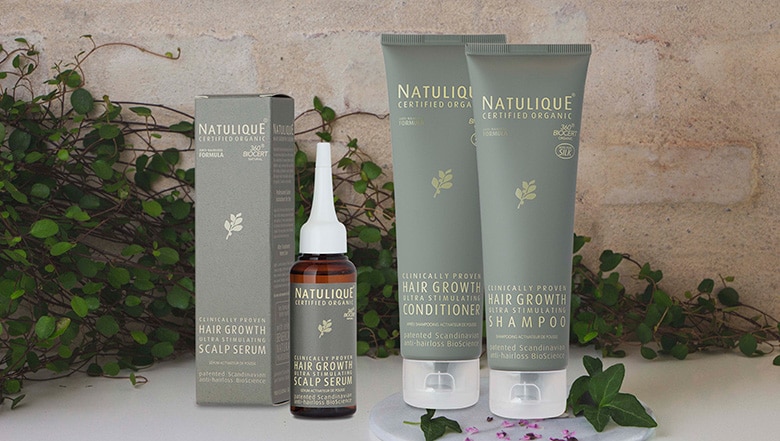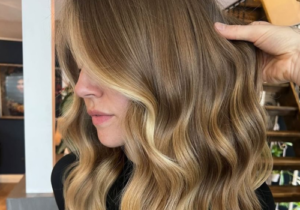Introduction to hair transplantation and post-operative care
What is a hair transplant?
Hair transplantation is a surgical procedure involving the transfer of hair follicles from a part of the scalp, often called the donor area, to a balding or thinning area. This technique is commonly used to treat androgenetic baldness in both men and women. Over the years, it has evolved considerably, offering increasingly natural results thanks to advanced techniques such as Follicular Unit Extraction (FUE) and Follicular Unit Transplantation (FUT).
Importance of post-transplant care
After a hair transplant, the recovery process is crucial to the success of the procedure. Post-transplant care plays an essential role in protecting newly implanted hair follicles and promoting their healthy growth.
Recovery process
Recovery from hair transplantation varies from person to person, but generally follows a similar pattern. In the first few days after the operation, patients may experience slight pain or discomfort, as well as swelling in the forehead or temples. To minimize these effects, the healthcare professional may recommend mild analgesics and cold application sessions.
Precautions to be taken
It is essential to strictly follow the guidelines provided by the surgeon to protect newly implanted grafts. This may include avoiding direct sun exposure, using mild hair products, and abstaining from activities that may cause excessive sweating or trauma to the scalp for at least two weeks. The first few days after transplantation are particularly critical, as the newly transplanted follicles are very sensitive.
Using the right shampoo is a fundamental component of hair transplant care. The wrong shampoo can irritate the scalp and compromise the integrity of the grafts. For these reasons, we recommend choosing a gentle, well-formulated shampoo without harsh ingredients such as parabens or sulfates, to maintain hydration and help protect recovering hair follicles.
So choosing the right shampoo after a hair transplant can make a significant difference to the success of the procedure and the quality of the results obtained.
Choosing the right shampoo after a hair transplant
Factors to consider when choosing a shampoo
Scalp type
Before choosing a shampoo after a hair transplant, it's essential to consider your scalp type. An oily, dry or sensitive scalp will require adapted ingredients to avoid irritation and promote optimal healing. For example, a dry scalp will benefit from a moisturizing shampoo, while an oily scalp will require a shampoo that regulates sebum production.
Shampoo ingredients
The ingredients present in a shampoo play a crucial role in protecting newly grafted follicles. It's best to avoid shampoos containing sulfates, parabens and synthetic dyes, which can disrupt the scalp's natural pH and cause irritation. Instead, opt for those containing soothing, natural ingredients such as chamomile extract, glycerine and panthenol, which help to soothe the scalp and promote cell regeneration.
The importance of a gentle shampoo for hair transplantation
Hair follicle protection
After a hair transplant, the follicles are extremely vulnerable. Using a gentle shampoo is essential to avoid damaging these delicate grafts. Gentle shampooing helps minimize scalp irritation and prevents premature loss of transplanted hair, ensuring that each implanted follicle has the opportunity to anchor itself and start growing properly.
Maintain scalp moisture and pH balance
The right shampoo after a hair transplant should also help maintain the scalp's natural pH and moisture levels. Adequate hydration is crucial to avoid dryness, which can cause scabs and delay the healing process. Maintaining a balanced pH also helps create a healthy environment for new hair growth, and promotes the integrity of the scalp's protective barrier.
In short, choosing a shampoo after a hair transplant is not a decision to be taken lightly. By taking into account the characteristics of your scalp and opting for gentle, well-formulated products, you can not only facilitate recovery, but also optimize the results of your procedure.
See also: Which shampoo for blond hair?
Post-transplant shampoo recommendations
Specific shampoos for hair transplantation
Hypoallergenic shampoo
The use of a hypoallergenic shampoo is strongly recommended after a hair transplant to avoid any adverse reactions. These shampoos are specially formulated to minimize the risk of allergic reactions that could compromise the graft. They are free from irritating substances such as artificial fragrances and harsh preservatives, ensuring safe and gentle use for grafted areas. Be sure to read labels carefully, and opt for a certified product designed for sensitive scalps.
Sulfate-free shampoo
Sulfate-free shampoos play a crucial role in post-transplant care. Sulfates are foaming agents commonly found in hair products, but their cleansing action can be too aggressive for newly implanted follicles. By choosing a sulfate-free shampoo, you protect your scalp from excessive drying and promote a healthy environment for follicle recovery. These products help maintain natural moisture levels without compromising the scalp's lipid barrier.
Natural and organic shampoos
Shampoos with aloe vera
Aloe vera-based shampoos are renowned for their soothing and healing properties, making them an excellent option after a hair transplant. Aloe vera is rich in vitamins and minerals that nourish the scalp and promote healing. Using a shampoo containing this natural ingredient will help maintain hydration and reduce post-operative itching or inflammation. What's more, its anti-inflammatory active ingredients can help soothe any irritation that may follow surgery.
Argan oil shampoos
Argan oil is another precious ingredient often found in natural shampoos, ideal for post-hair transplant care. This component is rich in fatty acids and antioxidants, which help nourish and protect newly transplanted hair. An argan oil-based shampoo can strengthen hair, prevent premature hair loss and ensure natural softness and shine. Regular use helps improve overall scalp health, making hair stronger and more supple.
Additional tips to maximize graft results
Washing frequency
After a hair transplant, it's important to follow your surgeon's recommendations regarding washing frequency. Washing too often can disrupt the healing process, while washing too far apart can lead to a build-up of sebum and dead cells. As a general rule, a gentle wash every two to three days is recommended for the first few weeks post-operatively, adapting the frequency as necessary according to individual reactions.
Gentle scalp massage
When washing, it's crucial to massage the scalp gently to avoid disturbing the grafts. Use your fingers to apply shampoo gently, avoiding excessive pressure. This type of massage also stimulates blood circulation, promoting better growth of the transplanted hair. Over time, and on your doctor's advice, you can gradually intensify your massages to support scalp revitalization.
By following these recommendations and choosing the right products, you'll not only promote optimal recovery after your hair transplant, you'll also help maximize the success and longevity of your results.
Additional tips to maximize graft results
Washing frequency
Appropriate washing
Following the recommendations on washing frequency after a hair transplant is crucial. Washing too often can interfere with the healing process, while excessive spacing can lead to the accumulation of sebum and dead cells. Generally, a gentle wash every two to three days is recommended for the first few weeks after surgery, with the possibility of adjusting the frequency according to individual scalp reaction.
Complementary products
In addition to the recommended shampoo, the use of conditioners and leave-in hair treatments can help strengthen your hair. Opt for moisturizing and nourishing products, free from potentially irritating substances, to provide complete scalp care. These products may contain active ingredients such as keratin or silk proteins, which promote the strength and resilience of transplanted hair.
Gentle scalp massage
Circulatory stimulation
When washing the scalp, a gentle massage is essential. Using the fingertips to apply shampoo gently helps to avoid disturbing the grafts. This process also stimulates blood circulation, essential for grafted hair growth. Over time, and according to your doctor's recommendations, you can gradually intensify the massage to revitalize the scalp.
Practices to avoid
Certain practices should be avoided after a hair transplant to prevent damage to the follicles. The use of high-temperature hair dryers, aggressive styling and the application of styling products such as gels and mousses can weaken the scalp. Use gentle styling techniques and let hair dry naturally to maintain graft health.
FAQ
What type of shampoo is recommended after a hair transplant?
We recommend using gentle shampoos, free of sulfates and parabens, to respect the sensitive scalp and implanted follicles.
When can I start washing my hair again after the transplant?
Generally, it's recommended to wait 48 hours after the transplant before washing your hair, but it's important to follow your surgeon's precise instructions.
Can I use hair oils after a hair transplant?
Hair oils should be avoided for the first few weeks after surgery. Consult your healthcare professional for appropriate advice.
How long should I avoid the sun after a transplant?
It is advisable to avoid direct sun exposure for at least two weeks after the procedure to protect the scalp.
Can dry shampoos be used after a hair transplant?
The use of dry shampoos is not recommended in the first few weeks after a transplant, as they can irritate the scalp.




